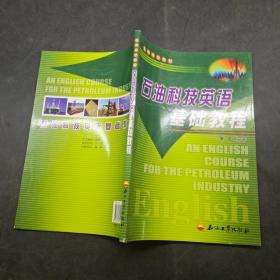
石油科技英语基础教程(第二版)
批量上传,套装书可能不全,下单前咨询在线客服! 正版书 !!!
¥ 21.24 7.6折 ¥ 28 全新
库存3件
作者康勇 编著
出版社石油工业出版社
ISBN9787502192617
出版时间2012-09
装帧平装
开本16开
定价28元
货号23805213
上书时间2024-10-18
- 最新上架
商品详情
- 品相描述:全新
- 商品描述
-
导语摘要康勇编的《石油科技英语基础教程(第2版)》对《石油科技英语基础教程》介绍了石油天然气工业中常见的英语词汇、基本的专业英语语法及标准专业术语的表达等内容,主要内容包括石油工业概况、石油地质与勘探、石油钻采工程、石油与天然气储运、石油加工与产品等。同时编人了一些有关机械基础、自动化控制、计算机技术、环境保护等方面的阅读材料,讲解了基本的专业英语语法及科技英语的应用知识,包括文章摘要、实验报告、科技信函、科技报告等科技文稿的写作,并编配有大量的习题。
《石油科技英语基础教程(第2版)》既可作为石油院校的石油科技英语的基础教材,也可作为石油科技人员自学及培训教材。
目录
Unit 1 Basic Knowledge of Science English
Unit 2 Petroleum and Its Modern Uses
Part 1 Warm-up Exercise
Part 2 Text
Part 3 Reading Materials
Part 4 Applications of Technical English
Unit 3 Petroleum Geology and Exploration
Part 1 Warm-up Exercise
Part 2 Text
Part 3 Reading Materials
Part 4 Applications of Technical English
Unit 4 Drilling and Completions Engineering
Part 1 Warm-up Exercise
Part 2 Text
Part 3 Reading Materials
Part 4 Applications of Technical English
Unit 5 Petroleum Production
Part 1 Warm-up Exercise
Part 2 Text
Part 3 Reading Materials
Part 4 Applications of Technical English
Unit 6 Storage and Transportation of Oil and Gas
Part 1 Warm-up Exercise
Part 2 Text
Part 3 Reading Materials
Part 4 Applications of Technical English
Unit 7 Petroleum Refining and Its Products
Part 1 Warm-up Exercise
Part 2 Text
Part 3 Reading Materials
Part 4 Applications of Technical English
Unit 8 A Challenging Career
Part 1 Warm-up Exercise
Part 2 Text
Part 3 Reading Materials
Part 4 Applications of Technical English
Appendix
1. Reference Answers to the Exercises
2. Reference Translations for the Texts
3. Glossary
4. Mathematical Symbols and Their Prounciation
5. Geologic Eras
6. Table of the Chemical Elements
参考文献
内容摘要
康勇编的《石油科技英语基础教程(第2版)》对《石油科技英语基础教程》介绍了石油天然气工业中常见的英语词汇、基本的专业英语语法及标准专业术语的表达等内容,主要内容包括石油工业概况、石油地质与勘探、石油钻采工程、石油与天然气储运、石油加工与产品等。同时编人了一些有关机械基础、自动化控制、计算机技术、环境保护等方面的阅读材料,讲解了基本的专业英语语法及科技英语的应用知识,包括文章摘要、实验报告、科技信函、科技报告等科技文稿的写作,并编配有大量的习题。
《石油科技英语基础教程(第2版)》既可作为石油院校的石油科技英语的基础教材,也可作为石油科技人员自学及培训教材。
主编推荐
康勇编*的《石油科技英语基础教程(第2版)》对《石油科技英语基础教程》介绍了石油天然气工业中常见的英语词汇、基本的专业英语语法及标准专业术语的表达等内容,主要内容包括石油工业概况、石油地质与勘探、石油钻采工程、石油与天然气储运、石油加工与产品等。同时编人了一些有关机械基础、自动化控制、计算机技术、环境保护等方面的阅读材料,讲解了基本的专业英语语法及科技英语的应用知识,包括文章摘要、实验报告、科技信函、科技报告等科技文稿的写作,并编配有大量的习题。
《石油科技英语基础教程(第2版)》既可作为石油院校的石油科技英语的基础教材,也可作为石油科技人员自学及培训教材。
精彩内容[9] At the head of most wells is a device that is called a Christmas Tree. This is really a system of valves that controls the amount of oil which is allowed to flow to the surface. The Christmas Tree directs the oil into the storage tanks, where it is kept until it is shipped.
[10] After a well has been brought in,the derrick is usually pulled down, only to be put up at the spot where another well is to be drilled. The valves of the Christmas tree and the pipes leading from it will probably be the only sign left that there is a producing oil well in the neighborhood. This is quite different from many of the older pictures of oil fields, with derricks crowded together, often only a few feet apart. In fact, in a modern field the wells are usually spaced quite far apart, since it is more profitable to recover the same amount of oil with fewer wells.
[11] As more oil is removed from the field, the pressure of the original drive gradually decreases. Sometimes the natural pressure drops to a point where no more oil can be recovered from the deposit. Nowadays, various methods in addition to pumping are used to keep these deposits producing if there is an indication that more oil can be recovered.
[12] One technique is to pump water into the oil-bearing formation, pushing or displacing the oil ahead of it toward the production wells. This system restores water drive.Another technique that will restore natural pressure to the formation is to pump gas back into the oil-bearing layer.
[13] Wells occasionally become blocked by pieces of asphalt, wax, or other solid material. In this case, the obstruction can be dissolved by pumping an acid into the well.Another technique involves pumping water and sand into the well under high pressure.
[14] All of these techniques have enormously increased the amount of oil that can be recovered. In the early days of the industry, as much as 75 percent of the oil had to be left in the ground. With more modem methods, the figure has been reduced to 50 percent or less. Many fields that had been abandoned have been brought back into production. When a field is reworked in this way, it is called secondary recovery.……
相关推荐
— 没有更多了 —





















以下为对购买帮助不大的评价